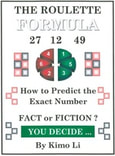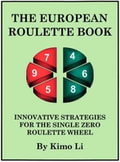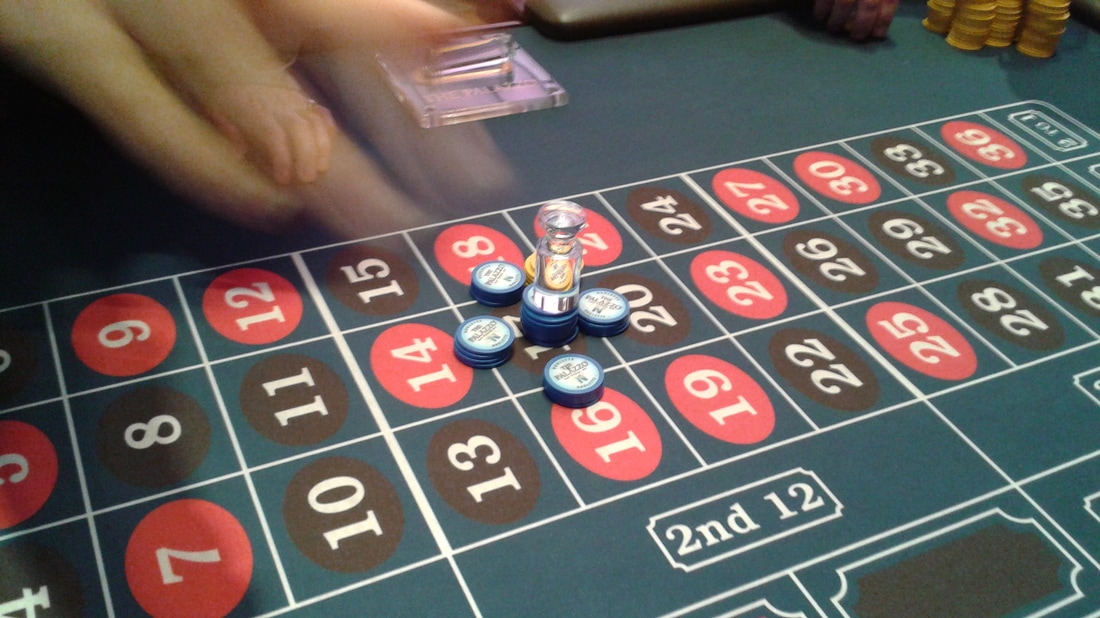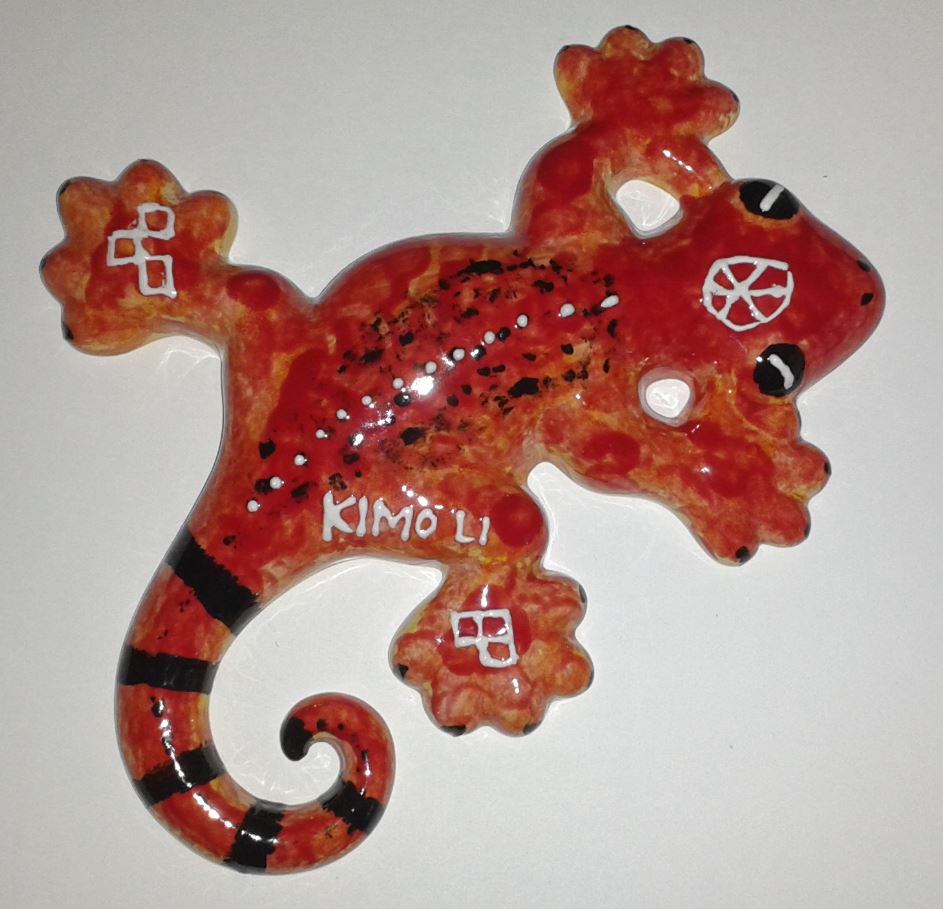PROFESSIONAL ROULETTE
THE ROULETTE MINDSET


The road to understanding roulette starts with the belief that roulette can be beaten.
When I first publish the books in 2005 and 2006, I was told that gambling books have a shelf life of 10 years, nineteen years, and still counting.
When I first publish the books in 2005 and 2006, I was told that gambling books have a shelf life of 10 years, nineteen years, and still counting.
gLOBAL pIE mETHOD
Global Pie is revolutionary map of the American roulette wheel head. The Global Pie Method is an innovative system for memorizing the numbers on the roulette wheel head, used to track ball movement without looking at the roulette wheel head. The roulette table layout reveals ingenious layout strategies using six-pack concepts, and the elusive formula that was used to determine the number sequence of the roulette wheel head.
The Global Pie Method offers a universal language and lingoes. Terms like the"Nuking", "Bow Tie-ing", and "Doing a Hemi" all describe specific ball movements. Other terms define multiple Global Pie strategies: Phoenix, Pendulum, Arrowhead, Hugs and Kisses, Boomerang, Four-Leaf Clover, Clover XXX, and Numbered Partners.
These Global Pie strategies rely on innovative section characteristics to enhance betting strategies and limit the amount wagered to maximize optimum return.
The Global Star System is an independent system designed to track numbers evenly throughout the roulette wheel head. Several Global Star strategies emerge as a result of combining individual stars together: Helicopter, Numbered Partners, Sum Connectors, and Pinwheel.
When combined, the Global Pie Method and the Global Star System, produces a strategy called the Eclipse. The Eclipse is designed to track specific numbers that are due to come in. More importantly, when a Global Pie merges with a Global Star the exact number is revealed.
The Global Pie Method offers a universal language and lingoes. Terms like the"Nuking", "Bow Tie-ing", and "Doing a Hemi" all describe specific ball movements. Other terms define multiple Global Pie strategies: Phoenix, Pendulum, Arrowhead, Hugs and Kisses, Boomerang, Four-Leaf Clover, Clover XXX, and Numbered Partners.
These Global Pie strategies rely on innovative section characteristics to enhance betting strategies and limit the amount wagered to maximize optimum return.
The Global Star System is an independent system designed to track numbers evenly throughout the roulette wheel head. Several Global Star strategies emerge as a result of combining individual stars together: Helicopter, Numbered Partners, Sum Connectors, and Pinwheel.
When combined, the Global Pie Method and the Global Star System, produces a strategy called the Eclipse. The Eclipse is designed to track specific numbers that are due to come in. More importantly, when a Global Pie merges with a Global Star the exact number is revealed.
These books do NOT provide a step by step ways to win playing roulette. Instead, these books explain how the roulette wheels were developed to balance the distribution of numbers throughout the wheel head.
More importantly, these books explain the relationship between the numbers on the wheel head and the roulette table layout.
For example, on the AMERICAN roulette wheel, low odd numbers (1, 3, 5, 9, 11, 13, 15, 17) and high even numbers (20, 22, 24, 26, 28, 30, 32, 34, 36) appear on one side of the wheel.
On the other side of the roulette wheel, low even numbers (2, 4, 6, 8, 10, 12, 14, 16, 18) and high odd numbers (19, 21, 23, 25, 27, 29, 31, 33, 35) make up the other half.
On the EUROPEAN roulette wheel, low red numbers (1, 3, 5, 7, 9, 12, 14, 16, 18) and high black numbers (20, 22, 24, 26, 28, 29, 31, 33, 35) make up one side of the wheel head.
The other side of the wheel head consists of low black numbers (2, 4, 6, 8, 10, 11, 13, 15, 17) and high red numbers (19, 21, 23, 25, 27, 30, 32, 34).
So, the American wheel is divided by odd and even numbers. The European wheel is divided by red and black numbers. The division of wheel halves is only one concept of many described the these books.
Let me guide you to a journey of a lifetime.
Learn the Kimo Li Way.
Email: [email protected]
More importantly, these books explain the relationship between the numbers on the wheel head and the roulette table layout.
For example, on the AMERICAN roulette wheel, low odd numbers (1, 3, 5, 9, 11, 13, 15, 17) and high even numbers (20, 22, 24, 26, 28, 30, 32, 34, 36) appear on one side of the wheel.
On the other side of the roulette wheel, low even numbers (2, 4, 6, 8, 10, 12, 14, 16, 18) and high odd numbers (19, 21, 23, 25, 27, 29, 31, 33, 35) make up the other half.
On the EUROPEAN roulette wheel, low red numbers (1, 3, 5, 7, 9, 12, 14, 16, 18) and high black numbers (20, 22, 24, 26, 28, 29, 31, 33, 35) make up one side of the wheel head.
The other side of the wheel head consists of low black numbers (2, 4, 6, 8, 10, 11, 13, 15, 17) and high red numbers (19, 21, 23, 25, 27, 30, 32, 34).
So, the American wheel is divided by odd and even numbers. The European wheel is divided by red and black numbers. The division of wheel halves is only one concept of many described the these books.
Let me guide you to a journey of a lifetime.
Learn the Kimo Li Way.
Email: [email protected]
Sophistication is manifested in the flow of simplicity and accuracy.
Simplicity is the organization of complex thought.
Accuracy is the result of simplicity.
FOR INFORMATION PURPOSES ONLY
All consulting services are final. No refunds.
All consulting services are final. No refunds.
_© Copyright 2011 Kimo Li
Proudly powered by Weebly







